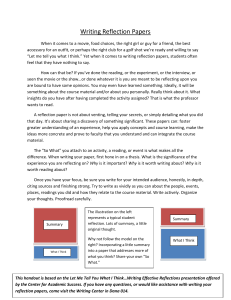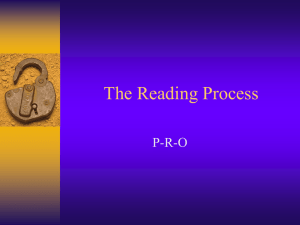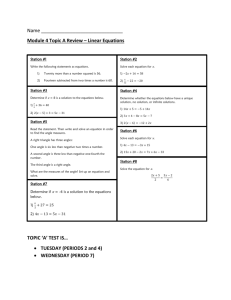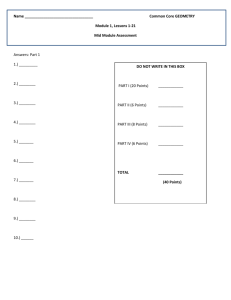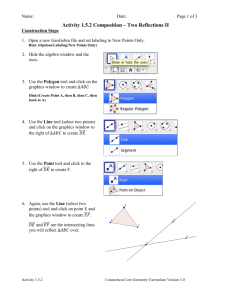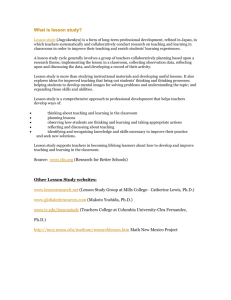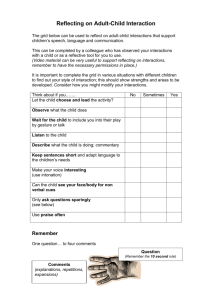Common Planning Meeting Discussion
advertisement
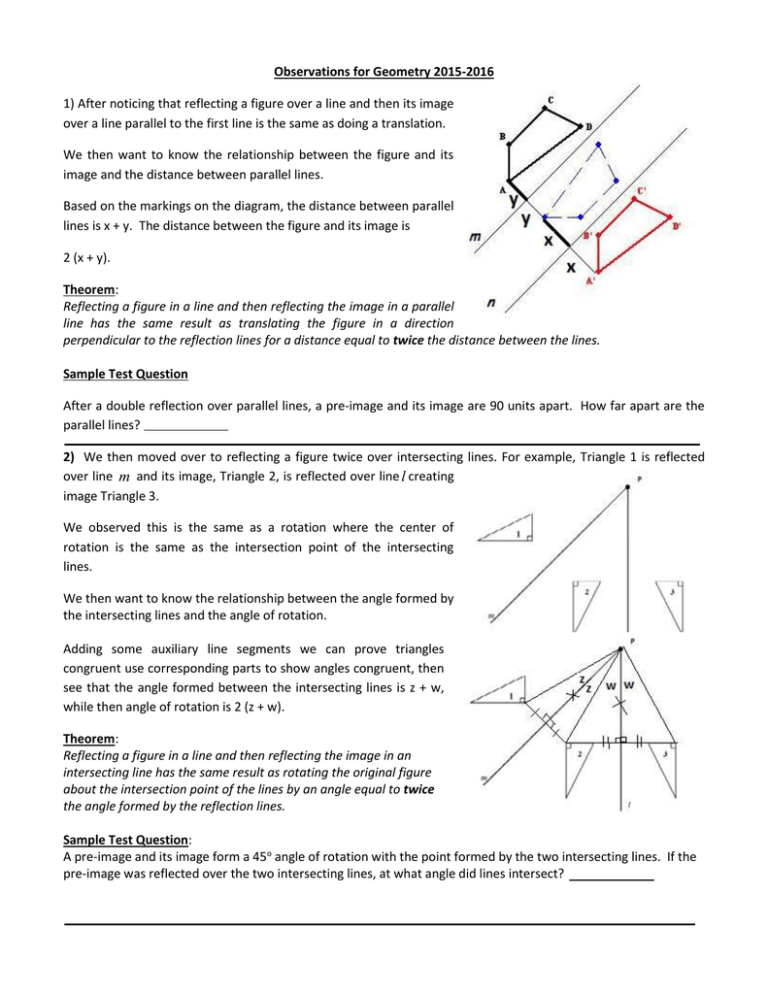
Observations for Geometry 2015-2016 1) After noticing that reflecting a figure over a line and then its image over a line parallel to the first line is the same as doing a translation. We then want to know the relationship between the figure and its image and the distance between parallel lines. Based on the markings on the diagram, the distance between parallel lines is x + y. The distance between the figure and its image is 2 (x + y). Theorem: Reflecting a figure in a line and then reflecting the image in a parallel line has the same result as translating the figure in a direction perpendicular to the reflection lines for a distance equal to twice the distance between the lines. Sample Test Question After a double reflection over parallel lines, a pre-image and its image are 90 units apart. How far apart are the parallel lines? 2) We then moved over to reflecting a figure twice over intersecting lines. For example, Triangle 1 is reflected over line m and its image, Triangle 2, is reflected over line l creating image Triangle 3. We observed this is the same as a rotation where the center of rotation is the same as the intersection point of the intersecting lines. We then want to know the relationship between the angle formed by the intersecting lines and the angle of rotation. Adding some auxiliary line segments we can prove triangles congruent use corresponding parts to show angles congruent, then see that the angle formed between the intersecting lines is z + w, while then angle of rotation is 2 (z + w). Theorem: Reflecting a figure in a line and then reflecting the image in an intersecting line has the same result as rotating the original figure about the intersection point of the lines by an angle equal to twice the angle formed by the reflection lines. Sample Test Question: A pre-image and its image form a 45o angle of rotation with the point formed by the two intersecting lines. If the pre-image was reflected over the two intersecting lines, at what angle did lines intersect? 3. After covering the basic formulas for reflecting over the x axis , y axis , y x , and y x , and looking for sample test questions, I came across the question below that intrigued me. I wondered if there was a formula reflecting over the line y a or x a ? Let’s see! In the diagram at the right, point P(x, y) has been reflected over the line y = a. You can see the distance between the line and point P is a - y. The distance between the line and P’ is also a - y. Then the y coordinate of P’ is found by (y + a – y + a – y) giving us 2a – y. Therefore reflecting a point P (x, y) over the line y = a yields image P’(x, 2a – y). Similarly reflecting over the line x = a yields image P’(2a –x, y). Sample Test Question: The point (3, y) is reflected over the line y = -3. What are the coordinates of the image? 4) In the Common Core curriculum we are asked to dilate equations of lines. How can we transform equations of lines using other transformations, such as reflections? And can we use the rules just developed for this? Here is a question that I came across that asks that very same question. Let’s try. Using the above formulas replace y with 2 – y and x with x. We get y = -1.5x + 4, which is the image after reflecting over the line y = 1. Sample Test Question: The equation y = x + 4 is reflected in the line y = -2. Find the equation of the image. ______ 5) Could we use the rules for doing a point reflection through the origin to reflect and equation through the origin and get the equation of the image? Sample Test Question: The line y x 2 is reflected through the origin. What is the equation of the image? 6) Next we covered translations in the coordinate plane, namely: Could this formula be used to translate equations? For example: What is the image of y 3 x 2 after the translation T1, 2 is applied to the equation? Knowing rules for transformations of functions, we know the answer should be y 3( x 1) 2 2 , which simplifies to y 3 x 1 . Let’s do the transformation indicated below. T1, 2 y 3 x 2 First let’s do T0, 2 y 3x 2 which gives us y 3x 2 2 or y 3x 4 Now let’s do T1, 0 y 3 x 2 but first let’s solve for x so we can add 1 to whatever x is equal to y4 y 4 1 . Solving for y we get y 3 x 1 T1, 0 x which gives us x 3 3 Let’s give you a chance to make up sample test question! Common Core: Common core asks about dilating equations!!! So that one is already covered. Further investigation: How can the formulas below be used to find the image of equations rotated 90o and 270o? Rotation of 90°: Rotation of 180°: Rotation of 270°: (same as point reflection in origin)

